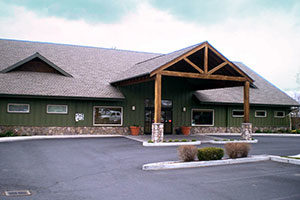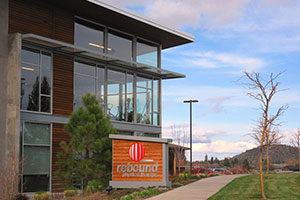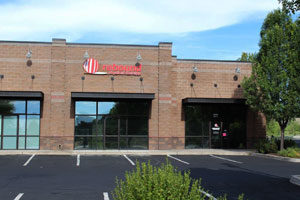Hand Therapy Bend, Redmond, and Prineville
 People value the use of their hands and any loss of function may have a devastating effect on their lives. Anyone with an injury wants the very best care. Rebound has been offering hand therapy in Bend since 1998, and in 2002 became the first physical therapy provider in Bend and Central Oregon to have a Certified Hand Therapist. To earn certification, our hand therapists had to have over 4,000 hours of direct hand therapy practice, at least 5 years of experience, and pass a rigorous exam. Rebound’s Certified Hand Therapists are experts in the intricate rehabilitation of the arm and hand. Tony Dao, OTR/L, CHT, Director of Hand Therapy, Erica Hranicka, OT/L, CHT, Maura Murphy, OTR/L, CHT, Taylor DeBar, MOTR/L, Lisa Cena, MOTR/L, CHT, and Hayley Hoggarth, OTR/L, CEAS, all have extensive experience rehabilitating a broad range of hand injuries and surgical procedures using evidence-based hand therapy techniques. Hand therapy is available in Bend at both our East and West clinics as well as in Prineville, and our and 4th Street location in Redmond.
People value the use of their hands and any loss of function may have a devastating effect on their lives. Anyone with an injury wants the very best care. Rebound has been offering hand therapy in Bend since 1998, and in 2002 became the first physical therapy provider in Bend and Central Oregon to have a Certified Hand Therapist. To earn certification, our hand therapists had to have over 4,000 hours of direct hand therapy practice, at least 5 years of experience, and pass a rigorous exam. Rebound’s Certified Hand Therapists are experts in the intricate rehabilitation of the arm and hand. Tony Dao, OTR/L, CHT, Director of Hand Therapy, Erica Hranicka, OT/L, CHT, Maura Murphy, OTR/L, CHT, Taylor DeBar, MOTR/L, Lisa Cena, MOTR/L, CHT, and Hayley Hoggarth, OTR/L, CEAS, all have extensive experience rehabilitating a broad range of hand injuries and surgical procedures using evidence-based hand therapy techniques. Hand therapy is available in Bend at both our East and West clinics as well as in Prineville, and our and 4th Street location in Redmond.
Why Choose a Certified Hand Therapist?
– Simply put, they’re the most qualified, highly-trained specialists and are current on the latest rehabilitation techniques and protocols, surgical procedures and postoperative therapy programs. Rebound works closely with Central Oregon’s physicians to maintain the most up-to-date rehabilitation standards for complex elbow, wrist, hand and finger surgery. See the full list of CHT training at the Hand Therapy Certification Commission website.
Rebound Physical Therapy Certified Hand Therapists in Bend & Redmond
 Tony Dao, OTR/L, CHT, Director of Hand Therapy
Tony Dao, OTR/L, CHT, Director of Hand Therapy
Tony Dao, OTR/L, CHT is the Director of Rebound Hand Therapy. Tony manages Rebound’s hand therapy services in both Bend and Redmond. He also helped to expand our hand therapy services and clinic hours to better accommodate patient’s needs.
Tony has practiced as an occupational therapist since graduating from the University of Washington. Tony began his career working in acute care at Seattle’s Harborview Medical Center (HMC), the region’s only level 1 trauma center. He gained his initial experience treating patients in the general surgery/trauma, orthopedic and neuroscience services. During this time he developed a deep passion for treating the upper extremity. He worked hard to attain the title of OT Clinical Specialist, which enabled him to mentor other clinicians in trauma care, including post-operative wound care and fabrication of custom orthoses/splints.
Tony strives to continually sharpen his skills through continuing education courses. He has attended hundreds of hours of classes in subjects including manual therapy and advanced splinting techniques. He has completed the coursework and is now eligible for manual therapy certification (COMT) from the International Academy of Orthopedic Medicine-US. Other schools of training he has attended and valued include the Mulligan Concept, Doctors Demystify, Seattle Center for Structural Medicine, Kinesio taping Association, and Orfit Splinting Workshops.
Tony and his wife, Rebecca, and their two children enjoy the Central Oregon community and make the most of the both snowy and sunny days. From skiing at Bachelor and the local Nordic trails, to fly fishing, trail running, playing golf, hiking and enjoying the outdoors; each day is a welcomed adventure!
Additional Certified Hand Therapy Team Members
 Erica Hranicka, OT/L, CHT
Erica Hranicka, OT/L, CHT
Erica is a graduate of the University of New Hampshire and has been a treating outpatient hand therapist since 2003. She has extensive post-operative and splinting experience. Prior to moving to Central Oregon and joining Rebound’s Redmond clinic, Erica spent 10 years managing outpatient hand therapy for Tuality Healthcare in Portland. She and her husband, Phillip, moved to Bend at the end of 2017. Erica is a volunteer for the Deschutes County Sheriff’s Office Search and Rescue team. She has a search and rescue K9, and also participates on the medical and air operations teams.
 Taylor DeBar, MOTR/L
Taylor DeBar, MOTR/L
Originally from Michigan, Taylor graduated from Grand Valley State University with her Master’s Degree in Occupational Therapy. Taylor first became interested in hand therapy while working throughout graduate school as a Rehabilitation Technician. Upon graduation, Taylor transitioned from a Rehab Tech to a full time Occupational Therapist where she enjoyed working with the upper extremity and assisting her patients return to their daily activities and hobbies. Additionally, she attended continued education courses in kinesiotaping and manual therapy techniques.
 Maura Murphy, OTR/L, CHT
Maura Murphy, OTR/L, CHT
 Hayley Hoggarth, OTR/L, CEAS
Hayley Hoggarth, OTR/L, CEAS
 Lisa Cena, OTR/L, CHT
Lisa Cena, OTR/L, CHT
Lisa obtained both her Bachelor of Science in Physical Education & Master Degree in Occupational Therapy from the University of Puget Sound. She began her career in 2000 in the outpatient therapy department at St. Charles Medical Center. In 2007, Lisa and her husband, Ari left Bend to travel around the world for a year. Upon their return, Lisa made a decision to focus her career on hand and upper extremity therapy and worked for two years with a hand therapy group in Olympia, WA. Lisa and her family returned to Bend in late 2009 and has since continued her focus on upper extremity rehabilitation. Lisa enjoys being with Ari and their two daughters, traveling, speaking Spanish, and the great outdoors of Central Oregon.
Rebound’s Certified Hand therapists are specialists who treat conditions including:
A broken bone is commonly known as a fracture. Any bone in the arm can be broken, but common areas for fractures in the arm are:
- Wrist, specifically the distal radius
- Forearm bones (radius and ulna)\
- Elbow
- Humerus
- Shoulder
Tennis elbow, golf elbow, snowboard, ski injuries – your hands are constantly at work during sports. We diagnose and treat all hand sports injuries.
Lateral epicondylitis, commonly known as tennis elbow, is a painful condition involving the tendons that attach to the bone on the outside (lateral) part of the elbow. Tendons anchor the muscle to bone. The muscle involved in this condition, the extensor carpi radialis brevis, helps to extend and stabilize the wrist. With lateral epicondylitis, there is degeneration of the tendon’s attachment, weakening the anchor site and placing greater stress on the area. This can then lead to pain associated with activities in which this muscle is active, such as lifting, gripping, and/or grasping. Sports such as tennis are commonly associated with this, but the problem can occur with many different types of activities, athletic and otherwise.
Carpal tunnel syndrome is essentially a pinched nerve in the wrist. There is a space in the wrist called the carpal tunnel where the median nerve and nine tendons pass from the forearm into the hand. Carpal tunnel syndrome happens when swelling in this tunnel puts pressure on the nerve.
Amputation is the removal of an injured or diseased body part. It may be the result of a traumatic injury, or it may be a planned operation to prevent the spread of the disease in an infected finger or hand. Some traumatically amputated fingers may be replanted or reattached. In many cases, reattachment of the amputated finger is not possible or advisable because the patient will be more comfortable and have better function if the part is not reattached.
When the skin comes in contact with something hot, it may be damaged, with death of cells in the skin. The severity of the injury depends on the intensity of the heat and the length of time that it is in contact with either heat or certain chemicals.
Degrees of burns
Burns are classified by the depth of injury, which helps determine the appropriate treatment.
- 1st Degree: Superficial – redness of skin without blisters
- 2nd Degree: Partial thickness skin damage – blisters present
- 3rd Degree: Full thickness skin damage – skin is white and leathery
- 4th Degree: Same as third degree but with damage to deeper structures such as tendons, joints and bone
Arthritis is the wearing away of the cartilage at a joint. Cartilage is the coating layer of tissue on the end of a bone that acts as a shock-absorber. Loss of cartilage can lead to joint destruction and a shift in the finger position towards the small finger side, which is called ulnar drift. When arthritis affects the MP joints, the condition is called MP joint arthritis.
Nerves are the “telephone wiring” system that carries messages from the brain to the rest of the body. A nerve is like a telephone cable wrapped in insulation. An outer layer of tissue forms a cover to protect the nerve, just like the insulation surrounding a telephone cable. A nerve contains millions of individual fibers grouped in bundles within the “insulated cable.” Nerves serve as the “wires” of the body that carry information to and from the brain. Motor nerves carry messages from the brain to muscles to make the body move. Sensory nerves carry messages to the brain from different parts of the body to signal pain, pressure, and temperature. While the individual axon (nerve fiber) carries only one type of message, either motor or sensory, most nerves in the body are made up of both.
Dupuytren’s contracture is an abnormal thickening of the tissue just beneath the skin. This thickening occurs in the palm and can extend into the fingers. Firm pits, bumps and cords (thick lines) can develop and cause the fingers to bend into the palm. This condition may also be known as Dupuytren’s Disease. Occasionally, the disease will cause thickening on top of the knuckles or cause lumps and cords on the soles of the feet (plantar fibromatosis).
Formerly Known as Reflex Sympathetic Dystrophy (RSD) – Complex regional pain syndrome (CRPS) is a pain condition that is constant over a long period of time. It is believed to be the result of dysfunction in the central or peripheral nervous systems. It causes the nervous system to send frequent or constant pain signals to the brain. The nervous system becomes overactive, causing intense burning or aching pain, swelling, changes in skin color and moisture.
Successful Hand Rehabilitation in Bend and Redmond
Physical therapy should begin as early as possible to achieve the highest level of functional ability possible. Following a thorough evaluation, a customized treatment plan is developed for each patient. Your hand therapist will be in regular communication with your physicians for the best possible outcome.
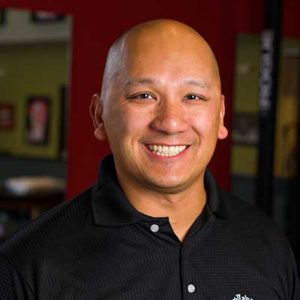 Tony Dao, OTR/L, CHT, Director of Hand Therapy
Tony Dao, OTR/L, CHT, Director of Hand Therapy Erica Hranicka, OT/L, CHT
Erica Hranicka, OT/L, CHT Taylor DeBar, MOTR/L
Taylor DeBar, MOTR/L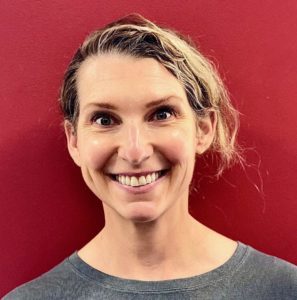 Maura Murphy, OTR/L, CHT
Maura Murphy, OTR/L, CHT Hayley Hoggarth, OTR/L, CEAS
Hayley Hoggarth, OTR/L, CEAS Lisa Cena, OTR/L, CHT
Lisa Cena, OTR/L, CHT
